Text
Common Causes of Jaw Pain
In most cases, temporomandibular joint disorder causes jaw pain. But apart from that, you may experience pain due to other reasons, including teeth grinding, gum disease, mumps, infections, arthritis, and trauma.

For example, arthritis affects the joints significantly. You may experience inflammation in your temporomandibular joint that causes jaw pain. There are many people who grind their teeth during emotional stress. This condition is also known as bruxism.
There are other symptoms that you may experience later, including sensitive teeth, jaw locking, pain in the face, a burning sensation in the mouth, popping or grinding sounds, and difficulty chewing or opening the mouth. It would be best to consult with an expert to get rid of such a painful condition. The specialist may recommend a blood test and an imaging study to analyze the causes of TMD.
0 notes
Text
TMJ vs Normal Jaw: What Are The Differences?
Generally, the skull and jawbone are joined by the temporomandibular joint that serves as a hinge. That’s why we are able to take necessary actions including speaking, chewing, and yawning due to this particular structure.
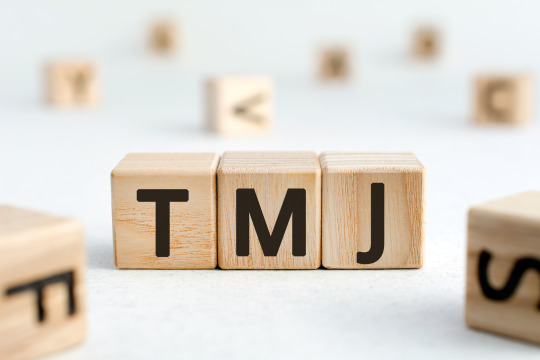
But when we suffer from TMJ TMD disorders, we experience a wide range of conditions that affect the proper functioning of the muscles and jaw joint surrounding it. The disorder may happen due to various reasons including teeth grinding or bruxism, injury, and arthritis. Patients with this type of disorder may notice several symptoms including headaches, jaw pain, clicking or popping noises, and difficulty opening or closing the mouth.
If you want to treat this problem, contact an experienced dentist for an accurate diagnosis and the best care.
0 notes
Text
Welcome to ICCMO the International College of Craniomandibular Orthopedics

Join the world's leading occlusion experts to gain new insights and information to help your patients.
#neuromuscular dentistry courses#neuromuscular dentistry#neuromuscular dentist#neuromuscular dentists
0 notes
Text

This image is related to what TMJ and TMD is. ICCMO is your online resource for information on the causes, diagnosis, and treatment of temporomandibular joint disorders often referred to as TMJ or TMD.
0 notes
Text
5 Signs You Might Have TMJ/TMD Disorder
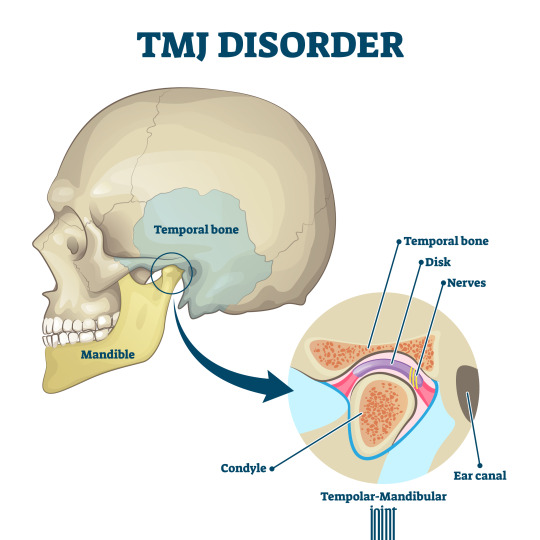
Persistent Jaw Pain: One of the primary indicators of TMJ/TMD disorder is persistent jaw pain. This pain can manifest as a dull ache or a sharp, stabbing sensation in the jaw joint area. It may worsen when chewing, speaking, or yawning. Sometimes, the pain can even radiate to other parts of the face, neck, or shoulders. If you notice recurring discomfort in your jaw, it's essential to consult a healthcare professional for an evaluation.
Difficulty Chewing: Have you noticed difficulty or discomfort while chewing? Problems with the temporomandibular joint can lead to challenges with jaw movement, making it uncomfortable or painful to eat certain foods. You might experience a clicking or popping sensation when opening or closing your mouth, which can further hinder your ability to chew properly. Difficulty chewing can also contribute to other issues like headaches or nutritional deficiencies if left untreated.
Frequent Headaches: Chronic headaches, especially those originating from the temples or around the ears, can be linked to TMJ/TMD disorder. The dysfunction of the jaw joint can trigger tension headaches or migraines due to the strain placed on surrounding muscles and nerves. If you find yourself experiencing regular headaches alongside other symptoms like jaw pain or clicking sounds, it's crucial to investigate the possibility of TMJ/TMD involvement.
Ear Pain or Ringing: Surprisingly, issues with the temporomandibular joint can affect the ears as well. Many individuals with TMJ/TMD disorder report experiencing ear pain, pressure, or ringing in the ears (tinnitus). This occurs because the jaw joint is located close to the ear canal, and any inflammation or dysfunction in this area can impact the surrounding structures.
Facial Muscle Tension: TMJ/TMD disorder can lead to increased tension in the facial muscles, causing them to feel tight, sore, or fatigued. You might notice difficulty relaxing your jaw or facial muscles, even when you're not actively using them. This chronic muscle tension can exacerbate other symptoms like jaw pain and headaches, creating a cycle of discomfort. Gentle massage, heat therapy, and relaxation techniques may provide temporary relief, but addressing the underlying TMJ/TMD issue is essential for long-term improvement.
0 notes
Text
How to Manage TMJ/TMD?

Besides the treatment options mentioned earlier, there are a few other methods that can be considered for managing TMJ/TMD:
Stress management techniques: Since stress and anxiety can intensify TMJ/TMD symptoms, practicing stress management techniques in your daily routine can be beneficial. This may include practices such as meditation, deep breathing exercises, yoga, or seeking professional help from a therapist.
Heat and cold therapy: Applying a warm compress or using an ice pack on the affected area can help reduce pain and inflammation associated with TMJ/TMD. Alternating between heat and cold therapy can provide relief and promote healing.
Botox injections: In some cases, Botox injections may be recommended to relax the muscles around the jaw joint. This can help relax muscle tension and reduce TMJ/TMD symptoms.
Surgery: In severe cases where conservative treatments have not provided sufficient relief, surgical intervention may be considered. Surgical options for TMJ/TMD include arthrocentesis (flushing out the joint), arthroscopy (using a small camera to visualize and treat the joint), or open-joint surgery (reconstructing or replacing the joint).
0 notes
Text
What is TMJ/TMD? Its Causes, Symptoms, and Treatment
Temporomandibular Joint Disorder (TMJ/TMD) is a common condition that affects the jaw joint and surrounding muscles. It can cause a range of uncomfortable symptoms, impacting people's quality of life.
What is TMJ/TMD?
The temporomandibular joint (TMJ) connects the jawbone to the skull, allowing for smooth jaw movement during activities such as chewing, speaking, and yawning. TMJ disorder (TMD) refers to a variety of conditions that affect the TMJ and the muscles surrounding it.
Symptoms of TMJ/TMD
youtube
TMJ/TMD can manifest in a variety of ways, and the severity of symptoms can vary from person to person. Some common symptoms include:
Jaw pain or tenderness: This is one of the most prevalent symptoms of TMJ/TMD. The pain may be localized to the jaw joint or expand to the surrounding areas, such as the ears, temples, or neck.
Clicking or popping sounds: People with TMJ/TMD may experience clicking, popping, or irritating sounds when opening or closing their mouths. This is often accompanied by a sensation of the jaw getting tight or locked in position.
Difficulty in jaw movement: TMJ/TMD can cause limited jaw movement, making it challenging to open the mouth fully or move it from side to side.
Headaches and facial pain: Chronic headaches, migraines, and facial pain are common symptoms associated with TMJ/TMD. The pain may be felt in the temples, forehead, or around the eyes.
Ear-related symptoms: TMJ/TMD can cause earaches, tinnitus (ringing in the ears), or a feeling of fullness in the ears. Some individuals may also experience dizziness or shakiness.
Causes of TMJ/TMD
The exact causes of TMJ/TMD are often multifactorial and can vary from person to person. Some common factors that contribute to the development of TMJ/TMD include:
Jaw misalignment: An improper bite or misalignment of the jaw joint can put excessive strain on the TMJ, leading to the development of TMJ/TMD.
Bruxism (teeth grinding): Habitual teeth grinding or clenching can exert excessive pressure on the TMJ, causing inflammation and pain.
Stress and anxiety: Emotional stress and anxiety can lead to increased muscle tension in the jaw, contributing to TMJ/TMD symptoms.
Trauma or injury: A direct blow to the jaw or an injury can damage the TMJ, resulting in TMJ/TMD symptoms.
TMJ/TMD Treatment Options
Fortunately, there are various treatment options available to manage TMJ/TMD effectively. The choice of treatment depends on the severity of the symptoms and the underlying causes. Some common treatment approaches include:
Lifestyle modifications: Simple lifestyle changes such as avoiding hard or chewy foods, practicing stress management techniques, and maintaining good posture can help reduce TMJ/TMD symptoms.
Medications: Over-the-counter pain relievers, muscle relaxants, and anti-inflammatory drugs can provide temporary relief from TMJ/TMD symptoms. In some cases, corticosteroid injections may be recommended to reduce inflammation.
Diagnostic Neuromuscular Orthotics: These customized devices help treat a range of neuromuscular disorders and enhance general mobility and function by supporting and realigning the muscles and joints. Compared to mouthguards or splints, these devices are more accurate.
Physical therapy: Jaw exercises, stretching techniques, and massage therapy can help relax the jaw muscles and improve jaw mobility.
Dental treatments: In cases where bite misalignment is a contributing factor, orthodontic treatments or dental restorations may be recommended to correct the bite and relax TMJ/TMD symptoms.
How to Manage TMJ/TMD?
Besides the treatment options mentioned earlier, there are a few other methods that can be considered for managing TMJ/TMD:
Stress management techniques: Since stress and anxiety can intensify TMJ/TMD symptoms, practicing stress management techniques in your daily routine can be beneficial. This may include practices such as meditation, deep breathing exercises, yoga, or seeking professional help from a therapist.
Heat and cold therapy: Applying a warm compress or using an ice pack on the affected area can help reduce pain and inflammation associated with TMJ/TMD. Alternating between heat and cold therapy can provide relief and promote healing.
Botox injections: In some cases, Botox injections may be recommended to relax the muscles around the jaw joint. This can help relax muscle tension and reduce TMJ/TMD symptoms.
Surgery: In severe cases where conservative treatments have not provided sufficient relief, surgical intervention may be considered. Surgical options for TMJ/TMD include arthrocentesis (flushing out the joint), arthroscopy (using a small camera to visualize and treat the joint), or open-joint surgery (reconstructing or replacing the joint).
What Do You Need to Know?
It is important to note that the treatment approach for TMJ/TMD should be designed to meet the specific needs of each patient. A comprehensive evaluation by a dental professional specializing in TMJ/TMD is critical to determining the underlying causes and developing an appropriate treatment plan.
How to Prevent TMJ/TMD Occurrence?
Prevention is always better than cure, and there are steps you can take to reduce the risk of developing TMJ/TMD or prevent its recurrence:
Practice good oral hygiene: Maintaining good oral hygiene habits, including regular brushing, flossing, and dental check-ups, can help prevent dental issues that may contribute to TMJ/TMD.
Avoid excessive jaw movements: Avoid habits such as chewing gum, biting nails, or biting on hard objects, as these can strain the jaw joint and increase the risk of TMJ/TMD.
Maintain good posture: Poor posture can put unnecessary strain on the jaw joint. Be mindful of your posture, especially when sitting for extended periods, and make an effort to sit up straight and avoid bending.
Use relaxation techniques: Practice relaxation techniques in your daily routine to reduce stress and muscle tension. This can include activities such as taking breaks to stretch, performing relaxation exercises, or engaging in hobbies that help you release stress.
Conclusion
TMJ/TMD is a common condition that can cause significant discomfort and impact daily life. Understanding the causes, recognizing the symptoms, and seeking proper treatment are necessary for managing TMJ/TMD effectively. With a combination of lifestyle modifications, medication, oral appliances, physical therapy, and, in some cases, surgical intervention, people with TMJ/TMD can find relief and improve their quality of life. If you suspect you may have it, consult a dental professional who can provide a proper diagnosis and guide you toward the most suitable TMJ/TMD treatment options for your specific requirements. Remember, early intervention and proactive management are critical to minimizing the impact of TMJ/TMD on your overall well-being.
#tmd treatment options#tmj tmd treatment options#causes of tmd#causes of tmj tmd#tmj tmd treatment#tmd causes#Youtube
0 notes
Text
How Does TMJ/TMD Impact You Emotionally?
The temporomandibular joint (TMJ) can be painful and discomforting. This condition not only affects a person physically but also emotionally. The constant discomfort, difficulty in jaw movement, and several other regular activities can make a person feel frustrated. Imagine a person having issues with chewing, sounds terrific right? However, recognizing the symptoms of TMJ/TMD can help you recover with proper treatment. In this article, we will take a dig into some crucial aspects that affect a TMJ/TMD patient emotionally. Let’s explore more below.
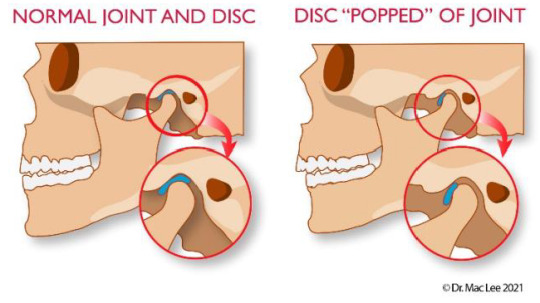
The Basics of TMJ/TMD
TMJ/TMD can be caused by various factors, including jaw injury, arthritis, or excessive teeth grinding. The temporomandibular joint acts like a sliding hinge, connecting your jawbone to your skull. When this joint and its surrounding muscles experience problems, it can lead to pain and difficulty in jaw movement.
The Emotional Toll
Living with TMJ/TMD can take a toll on your emotional health. Let's delve into some of the ways this condition can impact you emotionally.
A. Chronic Pain and Stress:
One of the primary emotional consequences of TMJ/TMD is chronic pain. The constant discomfort can lead to stress and anxiety, affecting your overall mood. As you navigate daily life with persistent jaw pain, it's common to experience heightened stress levels, which can contribute to a cycle of emotional distress.
B. Impact on Mental Health:
The emotional impact of TMJ/TMD goes beyond physical pain. Individuals with this condition may find themselves dealing with mental health challenges such as depression and frustration. The limitations imposed by TMJ/TMD can affect daily activities, leading to a sense of helplessness and emotional exhaustion.
Social Challenges
TMJ/TMD can also influence your social life, as the emotional toll may affect your ability to engage in various activities and maintain relationships.
A. Communication Difficulties:
Individuals with TMJ/TMD may experience difficulties in communication, especially if talking or even smiling induces pain. This can lead to social isolation as affected individuals may avoid social situations to minimize discomfort.
B. Impact on Relationships:
The emotional strain of TMJ/TMD can extend to personal relationships. Partners, family members, and friends may struggle to understand the challenges faced by those with TMJ/TMD, leading to strained relationships. Effective communication about the condition and its emotional impact is crucial for maintaining healthy connections.
Coping Strategies
Managing the emotional impact of TMJ/TMD is essential for overall well-being. Here are some simple coping strategies that can help:
A. Seek Professional Help
Consulting with a healthcare professional, such as a dentist or a specialist in TMJ disorders, can provide valuable insights and treatment options. They can help manage the physical symptoms of TMJ TMD, which in turn may alleviate emotional distress.
B. Stress Management Techniques
Since stress is a significant contributor to the emotional impact of TMJ/TMD, incorporating stress management techniques into your daily routine can be beneficial. This may include activities such as meditation, deep breathing exercises, or yoga.
C. Support Groups
Connecting with others who share similar experiences can provide emotional support. Online or in-person support groups for TMJ/TMD can offer a platform to share feelings, coping strategies, and advice.
D. Communication
Openly communicating with friends and family about your condition is crucial. Educate them about TMJ/TMD, helping them understand the challenges you face. This transparency can strengthen relationships and provide you with the support needed during challenging times.
Join ICCMO Today

Living with TMJ/TMD goes beyond the physical discomfort; it takes a toll on your emotional well-being and social life. Understanding the emotional impact of this condition is the first step toward effective coping. At ICCMO, we teach dentists about TMJ/TMD and their treatment. Even if you are a patient, you can visit our website to find the best dentist who can help you with the right guidance. If you are a dentist, become a member at ICCMO and see how it makes a big difference in your medical career. Remember, you're not alone, and with the right support, you can manage both the physical and emotional aspects of TMJ/TMD.
#causes of tmj tmd#causes of tmd#tmj dysfunction causes#tmd causes#temporomandibular joint dysfunction causes
0 notes
Text
34th Annual Bernard Jankelson Memorial Lecture

Mark your calendars for ICCMO’s 34th Annual Bernard Jankelson Memorial Lecture, taking place in vibrant Denver, CO on September 19-21, 2024.
This highly anticipated event promises to be a landmark in dental education, bringing together leading experts in an immersive and captivating experience. Get ready to be inspired, educated, and connected as we delve into the latest advancements in craniomandibular orthopedics and overall health.
Stay tuned for more exciting details coming soon! Don't miss this opportunity to join the forefront of the industry and elevate your dental practice to new heights. Save the date!
0 notes
Text
Navigating the Path to Relief: What Unfolds After a TMJ Diagnosis
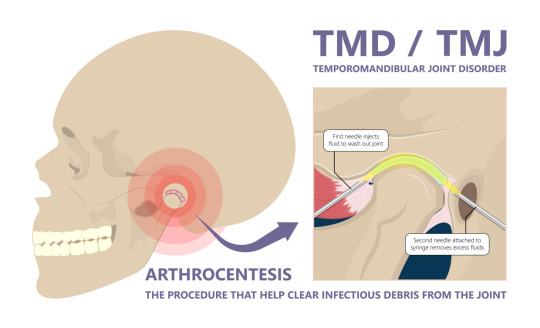
Introduction: Understanding the Journey
So, you've recently been handed a diagnosis – a term to put to the discomfort and challenges you've been experiencing with your jaw. But what happens next? How do you move forward on this winding road toward relief? Let's delve into the post-diagnosis terrain of Temporomandibular Joint (TMJ) disorders and explore the steps, considerations, and potential avenues for finding solace and comfort.
The Discovery Phase: Understanding Your TMJ Diagnosis
The journey to relief kicks off with understanding your TMJ diagnosis. It's more than just a label; it's a roadmap to navigate the challenges ahead. Imagine it as deciphering a unique language – the language of your body. Your healthcare provider, armed with various diagnostic tools, decodes the symptoms, examines the jaw's physical state, and pieces together the puzzle of your TMJ condition.
Unveiling the Complexity of TMJ Symptoms
TMJ disorders are not a one-size-fits-all ordeal. Jaw pain, clicking sounds, headaches – these symptoms paint a unique picture for each individual. Understanding this complexity empowers you to communicate effectively with your healthcare team. After all, they are your allies in this journey.
Charting Your Course: The Diverse Treatment Landscape
With a diagnosis in hand, you're now standing at the crossroads of treatment options. The landscape is diverse, ranging from simple lifestyle adjustments to more intricate interventions. It's a personalized journey, and the right path depends on the nature and severity of your TMJ condition.
Small Changes, Big Impact: Lifestyle Adjustments
Believe it or not, relief often begins with small, impactful lifestyle adjustments. Your diet, stress management techniques, and daily habits can play a pivotal role in alleviating symptoms and contributing to your overall well-being.
The Healing Touch of Physical Therapy
Physical therapy steps into the spotlight, offering exercises and stretches to strengthen jaw muscles, improve joint function, and ease the pain. Working hand in hand with a skilled physical therapist becomes a cornerstone of your treatment plan.
Orthodontics and Surgery: Exploring Advanced Interventions
For some, the journey might involve more advanced interventions like orthodontic adjustments or surgical procedures. These options aim to address structural issues within the jaw joint, providing lasting relief. However, understanding the nuances and discussing the benefits and risks is crucial before taking this route.
The Collaborative Journey: Patient and Provider
Relief is not a solo venture. It's a collaborative effort that hinges on open communication and trust between you and your healthcare team. Regular check-ins, discussions about progress, and adjustments to your treatment plan ensure that the road to relief is dynamic and responsive to your evolving needs.
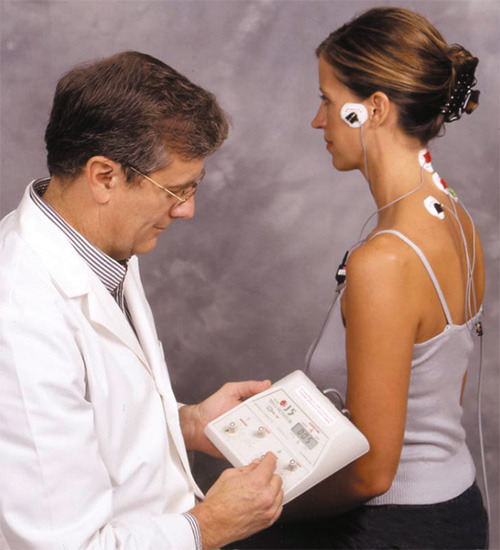
Conclusion: Your Personal Path to TMJ Relief
In the aftermath of a TMJ diagnosis, the road to relief is anything but predictable. It's a journey that unfolds uniquely for each individual – a journey of understanding, exploration, and collaboration. As you navigate this path, remember, relief is not just a destination; it's a continuous process of discovery and adaptation tailored to your unique needs. So, step forward with confidence, for the road ahead is as unique as you are.
#how is tmj tmd diagnosed#how is tmj diagnosed#how to treat tmj disorders#how do you diagnose tmj#how to diagnose tmj
0 notes
Text
Understanding The Process Of TMJ/TMD Diagnosis
TMJ or TMD affects the jaw and its surrounding structures and it can lead to a variety of symptoms, including jaw pain, headaches, and difficulty chewing. Diagnosing TMJ/TMD is a crucial first step in managing the condition and finding relief. In this blog, we'll delve into the diagnostic process, shedding light on how healthcare professionals identify and assess TMJ/TMD.

Clinical Examination
The journey to a TMJ/TMD diagnosis usually begins with a visit to a healthcare professional, often a dentist, oral and maxillofacial surgeon, or an orofacial pain specialist. They will begin with a thorough clinical examination, which includes checking for common symptoms like jaw pain, clicking or popping sounds when opening or closing the mouth, and limited jaw movement. The healthcare provider may also assess the alignment of your bite and the condition of your teeth to rule out any dental-related issues that could be contributing to the problem.
Medical History
During the initial consultation, you'll be asked about your medical history. It's important to provide a comprehensive overview of your symptoms, their duration, and any factors that might exacerbate or alleviate the pain. This information can be instrumental in pinpointing the cause of your TMJ/TMD.
Imaging
In some cases, imaging may be necessary to confirm a TMJ/TMD diagnosis. Common imaging techniques include X-rays, CT scans, and MRI scans. X-rays are often used to rule out dental issues, while CT scans and MRI scans provide detailed views of the TMJ and surrounding structures. These imaging methods can reveal any structural abnormalities, such as joint damage or disk displacement.
Diagnostic Tests
Certain diagnostic tests, like electromyography (EMG), can be helpful in assessing the activity of the jaw muscles. EMG records the electrical activity in your jaw muscles, providing insights into muscle function and potential sources of pain.
Bite Analysis
Another crucial aspect of the diagnosis is a bite analysis. The dentist or specialist may assess your bite to determine if it's misaligned or if there are any issues with your teeth that might be contributing to your TMJ/TMD symptoms. Orthodontic treatment or bite adjustments may be recommended in some cases.
Differential Diagnosis
It's essential to remember that TMJ/TMD symptoms can overlap with other conditions, including dental problems, sinus issues, and tension headaches. A thorough differential diagnosis is vital to rule out other potential causes of your discomfort.
Collaborative Care
The diagnosis of TMJ/TMD often involves a multidisciplinary approach. Your healthcare provider may collaborate with other specialists, such as physical therapists, to develop a comprehensive treatment plan tailored to your unique needs.
A precise diagnosis is essential to guide the appropriate treatment approach, which may include conservative therapies, lifestyle modifications, or, in some cases, surgical interventions. If you suspect you have TMJ/TMD, seeking the expertise of a qualified healthcare professional is the first step towards finding relief and improving your quality of life.
0 notes
Text
5 Best Ways to Choose a TMJ Specialist Near You
TMJ can be a painful and debilitating condition that affects the jaw joint and the surrounding muscles. If you are experiencing TMJ symptoms like jaw pain, headaches, or difficulty chewing, seeking the expertise of a qualified TMJ specialist is crucial. However, finding the right TMJ specialist can be a daunting task.

ICCMO is the right place if you need a TMJ diagnosis from expert healthcare professionals. This blog discusses five essential ways to choose a TMJ specialist near you who can effectively address your concerns and provide the necessary treatment.
How Can You Find The Right TMJ Specialist?
Credentials and Training
Look for a specialist who has completed relevant education and training in the field of orofacial pain and TMJ disorders. Dentists with additional certifications in orofacial pain or oral medicine often have the necessary expertise to diagnose and treat TMJ disorders effectively. You can also check if the specialist is a member of professional organizations such as the American Academy of Orofacial Pain (AAOP) or the American Academy of Craniofacial Pain (AACP). Membership in these organizations often indicates a commitment to staying updated on the latest research and treatment methods.
Experience and Expertise
Experience matters when it comes to choosing a TMJ specialist. An experienced specialist is more likely to have encountered a wide range of TMJ cases and developed effective treatment plans. You can ask the specialist about their experience with cases similar to yours and inquire about their success rates in providing relief to TMJ patients. Experienced specialists are also more likely to have access to advanced diagnostic tools and treatment options.
Patient Testimonials and Reviews
Reading patient testimonials and online reviews can provide valuable insights into the quality of care provided by a TMJ specialist. Look for reviews on reputable websites and forums to learn about the experiences of other patients. Pay attention to both positive and negative feedback, as it can help you gauge the specialist's communication skills, bedside manner, and overall effectiveness in treating TMJ disorders.
Consultation and Communication
A good TMJ specialist should be an effective communicator. During your initial consultation, pay attention to how the specialist listens to your concerns, asks questions about your symptoms, and explains the diagnosis and treatment options. They should take the time to educate you about your condition and involve you in the decision-making process. Open and clear communication is essential for a successful patient-specialist relationship.
Treatment Approach and Technology
Different TMJ specialists may have varying treatment approaches. Some may focus on conservative, non-invasive therapies, while others may recommend surgical interventions in severe cases. The best approach for you will depend on the severity of your condition and your individual needs. Ensure that the specialist discusses the available treatment options and the pros and cons of each. Additionally, inquire about the technology and equipment they use for diagnosis and treatment. Advanced diagnostic tools, such as 3D imaging or electromyography, can improve the accuracy of the diagnosis and the effectiveness of treatment.
Restore Your Comfort With ICCMO
Choosing a TMJ specialist near you is a significant decision, as it can have a profound impact on your quality of life. Don't hesitate to seek a second opinion if you have doubts about the treatment plan or if your symptoms persist.

Our organization's unwavering dedication to providing the best diagnosis for TMJ/TMD is a testament to our mission of restoring comfort and confidence to the lives of those affected by these conditions. Through a combination of cutting-edge techniques and compassionate care, we have made it our purpose to alleviate the pain and suffering that TMJ/TMD can bring. Check our website today to know more about us.
0 notes
Text
How is TMJ TMD Diagnosed?
Diagnosing TMJ/TMD involves a thorough examination and assessment of a patient's symptoms, medical history, physical examination, and, if necessary, advanced imaging techniques.

Understanding TMJ/TMD Diagnosis: A Comprehensive Guide
Medical History and Symptoms Assessment
A crucial step in diagnosing TMJ/TMD is obtaining a detailed medical history and understanding the patient's symptoms. Patients are asked about their jaw pain, difficulty in chewing, clicking or popping sounds in the jaw, headaches, earaches, and any habits like teeth grinding or clenching. This helps the healthcare professional to have a comprehensive understanding of the patient's condition.
Physical Examination
A physical examination of the jaw and surrounding areas is performed to evaluate the range of motion, any abnormalities in jaw movement, tenderness, muscle strength, and joint sounds. The examination may include feeling the jaw joint during movement and assessing the alignment of the jaw.
Diagnostic Imaging
If necessary, diagnostic imaging may be employed to get a clearer view of the temporomandibular joint. Common imaging methods include:
X-rays: X-rays can reveal structural issues, such as arthritis, fractures, or dislocations in the jaw.
MRI (Magnetic Resonance Imaging): MRI provides detailed images of the soft tissues in and around the temporomandibular joint, aiding in diagnosing disc displacement or other soft tissue problems.
CT (Computed Tomography) Scan: CT scans offer detailed images of the bones involved in the temporomandibular joint, helping to identify structural abnormalities or joint disorders.
Dental Evaluation
A thorough examination of the teeth and bite is crucial, as dental problems can often contribute to TMJ/TMD symptoms. Dental evaluations may include assessing bite alignment, tooth wear, and signs of teeth grinding or clenching (bruxism).
Muscle and Joint Palpation
Health professionals may gently press on various muscles around the jaw and neck to identify tenderness, muscle spasms, or joint abnormalities. This can aid in pinpointing areas of discomfort and potential causes.
Assessment of Jaw Movement
Evaluating the range of motion and movement of the jaw, including assessing how the jaw opens and closes, and whether there are any deviations or limitations, is vital in diagnosing TMJ/TMD.
Ruling Out Other Conditions
To confirm a TMJ/TMD diagnosis, healthcare professionals must rule out other conditions that could be causing similar symptoms, such as sinus issues, dental infections, or facial neuralgia.
Collaboration and Consultation
Collaboration with a team of healthcare professionals, including dentists, oral and maxillofacial surgeons, orthodontists, and physical therapists, may be necessary for a comprehensive diagnosis and to determine the most suitable treatment plan for the patient.
Choose The Experts
ICCMO is a professional organization aiming to help dentists better diagnose TMJ TMD and occlusion patients with the help of the best techniques and science-based technology. Accurate diagnosis is essential for developing an appropriate treatment plan to alleviate pain and improve the quality of life for individuals affected by TMJ/TMD.
If you’re a dentist, you can also become a member of ICCMO, the global voice of scientific advancement and education in occlusion, Neuromuscular dentistry, and TMJ/TMD diagnosis.
0 notes
Text
What Is TMD and TMJ
You make facial gestures like smiling, laughing, chatting, and chewing every day without giving them much thought. However, if you have temporomandibular joint dysfunction (TMJ), those straightforward movements could be extremely painful for you.

The good news is that you may take care of some temporomandibular joint (TMJ) pain management tasks from the convenience of your home.
Jaw Pain, TMJ and TMD
When it comes to “What is TMD and TMJ”, your temporomandibular joints, which are located where your skull and lower jawbone converge, are where the muscles and ligaments that move your mouth are connected. Temporomandibular disorders, such as arthritis, dislocation, injury, or infection in the TMJ, can result in throbbing headaches, neck discomfort, and ringing in the ears in addition to painful locking and clicking of the jaw.
Many people's TMD symptoms subside quickly, but for some people, the pain and discomfort they experience while using their facial muscles is chronic (long-lasting), and it can get worse over time if they clench, chew, swallow, or grind their teeth.
TMJ Pain Relief: 4 Best Practices
You can control symptoms and lessen TMJ pain without surgery using the following four ways:
1. Maintain the resting position of your jaw
To help with TMJ pain, lessen wide jaw motions including chewing, yawning, singing, and yelling. Make every effort to keep your muscles in their most relaxed state.
2. Correct your posture
Sitting in an unpleasant position for extended periods of time might exacerbate jaw pain.
Choose a chair with back support and take frequent breaks to improve your posture while working. When you're driving, make sure your seat is as upright as it can be; when you're relaxing and doing things like reading or watching TV, choose a spot where you can sit up straight; add a pillow behind your back for support.
3. Get a good night’s sleep
The importance of sleep to good health is extensive. To relieve TMJ pain, sleep on your back with pillows supporting your neck. Avoid sleeping on your stomach, and if you're on your side, avoid putting your hand on your jaw.
4. Use a hot or cold compress
In contrast to ice, which helps to reduce discomfort and swelling, heat can help to relax your jaw muscles and improve blood flow. Before placing a hot or cold compress to your jaw for 15 to 20 minutes at a time, make sure there is a thin layer of space between the compress and your skin.
To learn more, you can visit ICCMO.org.
0 notes
Text
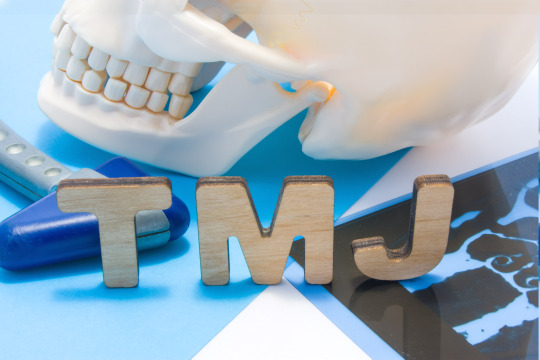
What are TMJ disorders?
TMJ disorders, or temporomandibular joint disorders, are medical conditions that affect the temporomandibular joint, which connects your jawbone to your skull. These disorders encompass a wide range of ailments and are caused by various factors.
Individuals with TMJ disorders may experience a diverse set of symptoms, each of which can vary in intensity and discomfort. These symptoms can include ongoing jaw pain, difficulty or limitations in jaw movement, clicking or popping sounds when opening or closing the mouth, and discomfort while chewing.
The term "TMJ disorders" is used to describe a broad group of conditions that can have multiple underlying causes, making diagnosis and treatment complex. Medical professionals have a variety of therapy options available to address TMJ issues, depending on the specific symptoms and causes.
Fortunately, many cases of TMJ disorders resolve relatively quickly, often within a few months, with conservative treatments and self-care practices. However, in some instances, the conditions may persist or recur, requiring ongoing management and care to alleviate symptoms and improve jaw function. Early detection and proper management can significantly improve the prognosis for individuals with TMJ disorders.
0 notes
Text
Exploring Effective TMJ/TMD Treatment Options for Relief and Recovery
Temporomandibular joint disorder (TMD), commonly known as TMJ, can cause chronic discomfort and pain in the jaw joint and surrounding muscles. It can significantly impact one's quality of life, affecting eating, speaking, and even sleeping. Fortunately, there are various treatment options available to alleviate the symptoms and improve the overall function of the jaw. In this article, we will delve into the range of TMJ/TMD treatment options that individuals can explore for relief and recovery.
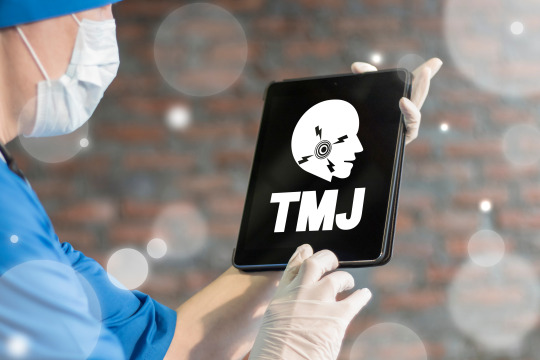
Lifestyle and Self-Care Practices:
Before considering more invasive treatments, it is essential to adopt healthy habits and practices that can aid in managing TMJ/TMD symptoms. This includes:
a) Applying heat or cold packs: Alternating between warm and cold compresses can help reduce inflammation and alleviate pain.
b) Eating soft foods: Opting for a diet of softer foods can ease strain on the jaw joint and facilitate healing.
c) Practicing stress management techniques: Stress and anxiety can exacerbate TMJ/TMD symptoms. Engaging in activities like meditation, deep breathing exercises, and physical exercise can help reduce stress levels.
Medications:
In some cases, over-the-counter pain relievers such as ibuprofen or acetaminophen can provide temporary relief from TMJ/TMD discomfort. However, it is crucial to consult with a healthcare professional before taking any medication, as they can advise on appropriate dosage and potential side effects.
Dental Treatments:
Dental treatments can be beneficial in managing TMJ/TMD symptoms, especially if the condition is related to teeth grinding or misalignment. Some dental treatment options include:
a) Oral splints or mouthguards: Custom-fitted oral splints or mouthguards can help alleviate symptoms by providing a cushioning effect and reducing the impact of teeth grinding or clenching.
b) Bite adjustment: If misalignment is the underlying cause, adjusting the bite through orthodontic treatments, dental restorations, or reshaping the teeth may be recommended.
Physical Therapy:
Physical therapy can play a vital role in TMJ/TMD treatment by addressing muscle tension and improving jaw mobility. A physical therapist specializing in TMJ/TMD may recommend exercises to strengthen the jaw muscles, gentle stretches, and manual techniques to relieve tension in the affected areas.
Injections and Surgical Options:
In severe cases where conservative treatments have not provided sufficient relief, more invasive options may be considered. These options are typically reserved for those with significant pain or structural issues. They include:
a) Trigger point injections: Injections of anesthetic or corticosteroids can target specific trigger points to alleviate muscle pain and spasm.
b) Arthrocentesis: This minimally invasive procedure involves flushing the temporomandibular joint with sterile fluids to remove debris and reduce inflammation.
c) Arthroscopy or open-joint surgery: These surgical interventions are usually reserved for complex cases when conservative treatments have failed. Arthroscopy involves inserting a thin tube with a camera into the joint to assess and repair any damage. Open-joint surgery is more invasive and may involve joint replacement or restructuring.
Conclusion:
TMJ/TMD treatment options vary depending on the severity of the condition and its underlying causes. Lifestyle modifications, self-care practices, and conservative treatments are often the first line of defense, aiming to alleviate symptoms and improve overall jaw function. If these approaches prove insufficient, more advanced treatments, such as dental interventions, physical therapy, or injections, may be recommended. In rare cases, surgical options may be considered. Seeking professional advice and diagnosis from a qualified healthcare provider is crucial in determining the most appropriate treatment plan for individuals dealing with TMJ/TMD.
0 notes
